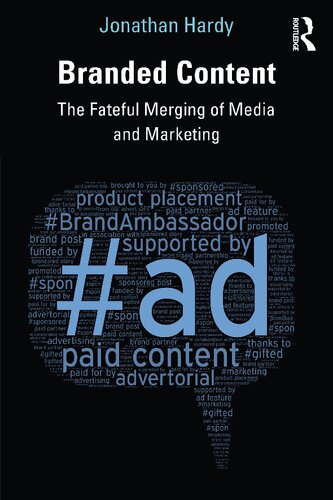

Most ebook files are in PDF format, so you can easily read them using various software such as Foxit Reader or directly on the Google Chrome browser.
Some ebook files are released by publishers in other formats such as .awz, .mobi, .epub, .fb2, etc. You may need to install specific software to read these formats on mobile/PC, such as Calibre.
Please read the tutorial at this link: https://ebookbell.com/faq
We offer FREE conversion to the popular formats you request; however, this may take some time. Therefore, right after payment, please email us, and we will try to provide the service as quickly as possible.
For some exceptional file formats or broken links (if any), please refrain from opening any disputes. Instead, email us first, and we will try to assist within a maximum of 6 hours.
EbookBell Team

4.8
84 reviewsThis is a critical study of the changing relationship between media and marketing communications in the digital age. It examines the growth of content funded by brands, including brands’ own media, native advertising, and the integration of branded content across film, television, journalism and publishing, online, mobile, and social media.
This ambitious historical, empirical, and theoretical study examines industry practices, policies, and ‘problems’, advancing a framework for analysis of communications governance. Featuring examples from the UK, US, EU, Asia, and other regions, it illustrates and explains industry practices, forms, and formats and their relationship with changing market conditions, policies, and regulation. The book provides a wide-ranging and incisive guide to contemporary advertising and media practices, to different arguments and perspectives on these practices arising in industry, policy, and academic contexts, and to the contribution made by critical scholarship, past and present. It also offers a critical review of industry, regulatory, societal, and academic literatures.
Jonathan Hardy examines the erosion of the principle of separating advertising and media and calls for a new framework for distinguishing marketing communications across 21st-century communications. With a focus on key issues in industry, policy, and academic contexts, this is essential reading for students of media industries, advertising, marketing, and digital media.